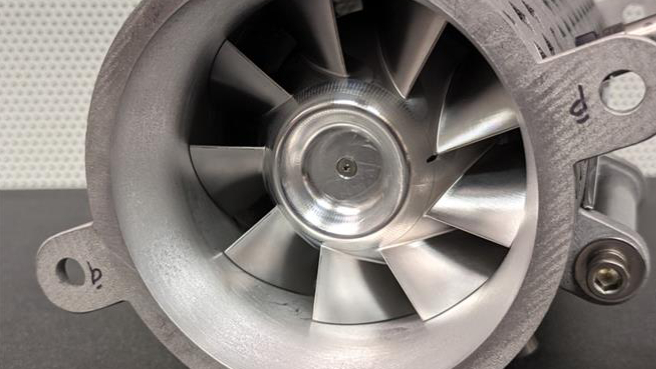Space stations are loud — that's why NASA is making a quiet fan
The new designs will make spacecraft environments more comfortable for their inhabitants.

Despite the International Space Station being comparable in size to a five-bedroom house, the prospect of spending months confined to a building that floats 250 miles (402 kilometers) above the Earth would be daunting for many.
You'd have to deal with limited space, a lack of privacy, the knowledge that you're being watched, and the difficulty of performing everyday tasks in a zero-gravity environment. One thing we don't often consider, though, when it comes to living on the International Space Station (ISS), is the sound. The constant hum of fans keeping crucial life support systems and instruments cool could get to anyone after a while, and there is nowhere to escape it.
Thankfully, NASA researchers have developed a new "Quiet Space Fan" to reduce noise on crewed spacecraft, a design they plan on sharing with the industry for future use on commercial space stations.
By reducing noise at the source, NASA hopes people will be able to hear each other more clearly, become aware of alarms faster, and reduce risk of hearing loss, along with mitigating the irritation that loud, unwanted sounds can incur.
"As NASA continues to support the design and development of multiple commercial space stations, we have intentional and focused efforts to share technical expertise, technologies, and data with industry," Angela Hart, manager of NASA's Commercial Low Earth Orbit Development Program, said in a press release.
"The Quiet Space Fan research is one more example of how we are actively working with private companies to foster the development of future destinations," she continued.
An initial fan prototype was designed at NASA's Glenn Research Center in Cleveland in 2009. The fan's design was similar to the earlier Orion cabin fan — however, acoustic measurements showed that the new model was roughly 10 decibels quieter than similar-sized commercial fans.
Get the Space.com Newsletter
Breaking space news, the latest updates on rocket launches, skywatching events and more!
Taking this prototype further, a larger fan was recently designed with twice the flow rate and pressure rise capability compared to the initial 2009 prototype. To put that into perspective, the original fan could provide enough airflow for a large car or van, while the new larger fan could provide enough airflow for a house.
"This work will lead to significant benefits including volume and mass savings from noise controls that are no longer as large or needed at all, reduced system pressure loss from mufflers and silencers that don't need to be as restrictive, reduced power draw because of the reduced system pressure loss and the highly efficient fan design, and satisfying spaceflight vehicle acoustic requirements to provide a safe and habitable acoustic environment for astronauts," Chris Allen, Acoustics Office manager at NASA, said in a press release.
Improving conditions during spaceflight for humans is something that will make space exploration more comfortable and efficient for future astronauts, and the development of fans that reduce unwanted noise in spacecraft environments is another step towards achieving that goal.
Join our Space Forums to keep talking space on the latest missions, night sky and more! And if you have a news tip, correction or comment, let us know at: community@space.com.

Conor Feehly is a New Zealand-based science writer. He has earned a master's in science communication from the University of Otago, Dunedin. His writing has appeared in Cosmos Magazine, Discover Magazine and ScienceAlert. His writing largely covers topics relating to neuroscience and psychology, although he also enjoys writing about a number of scientific subjects ranging from astrophysics to archaeology.









